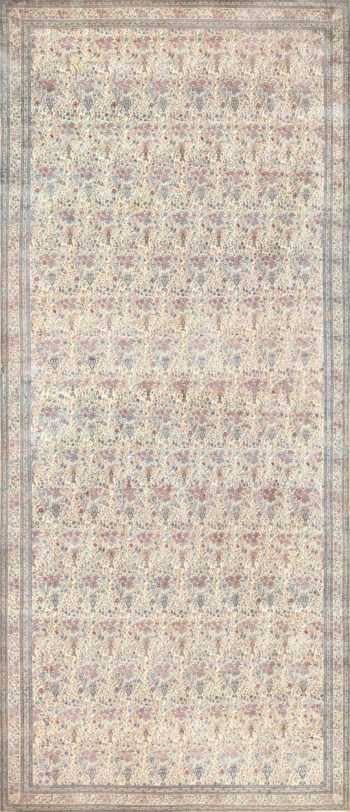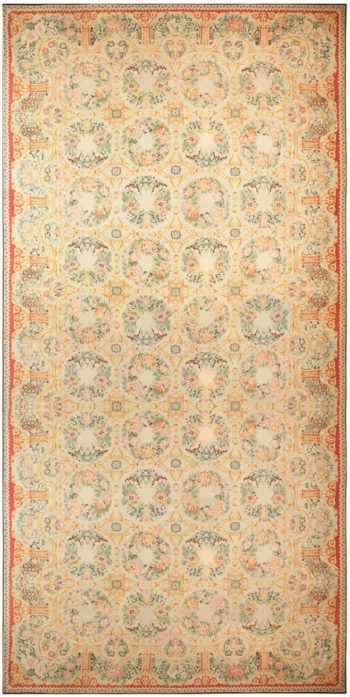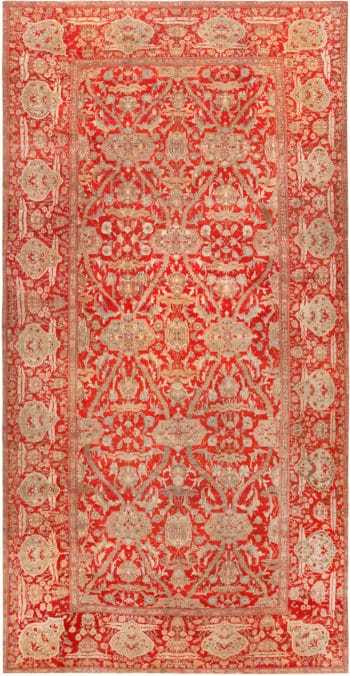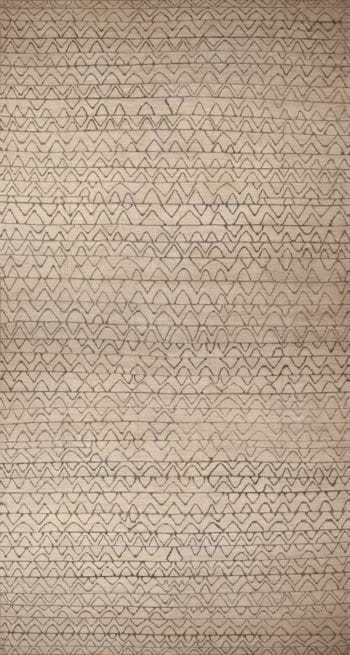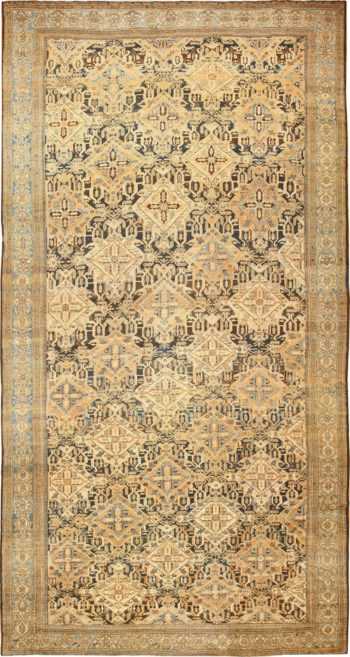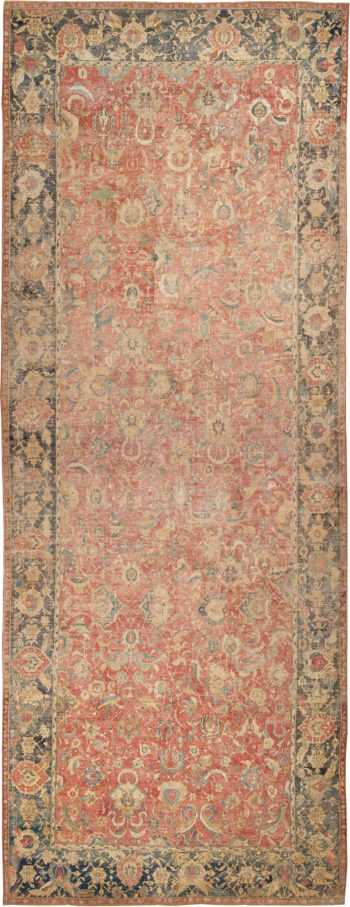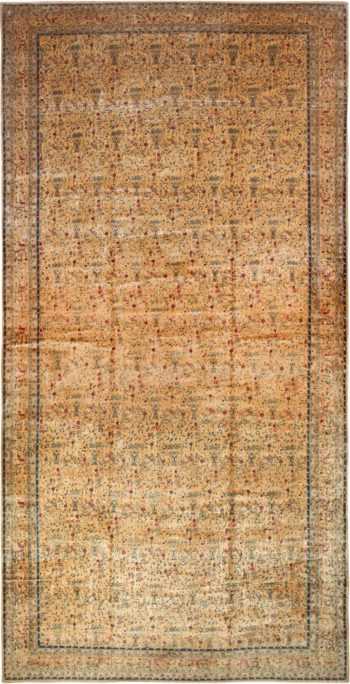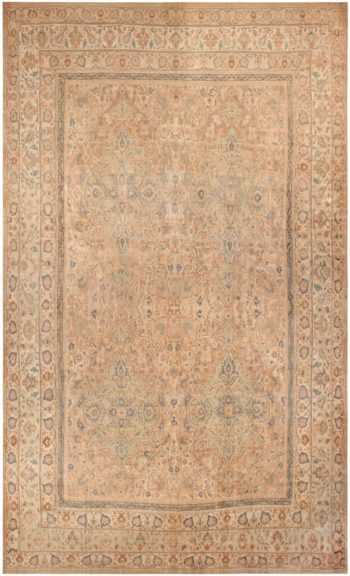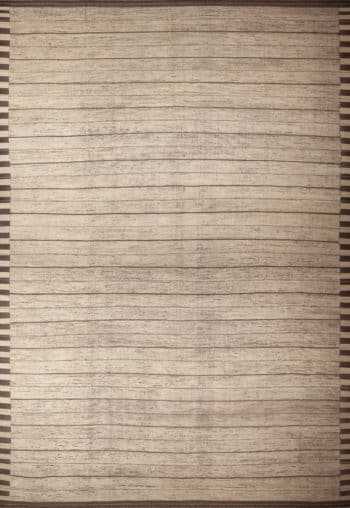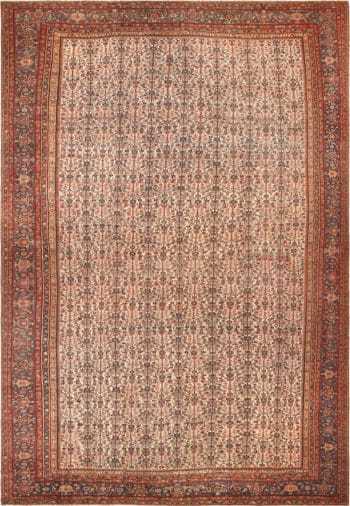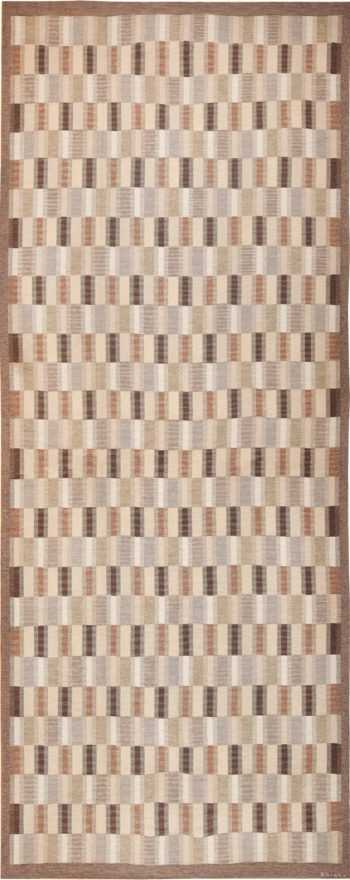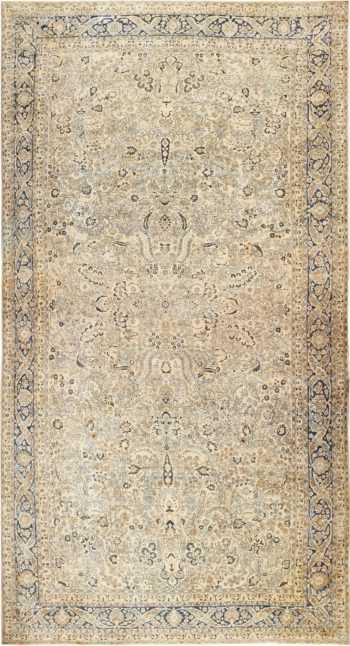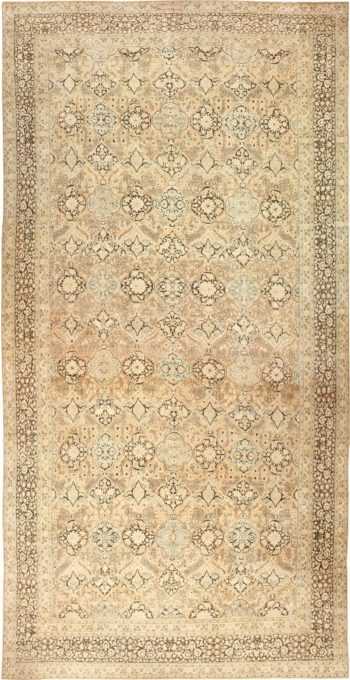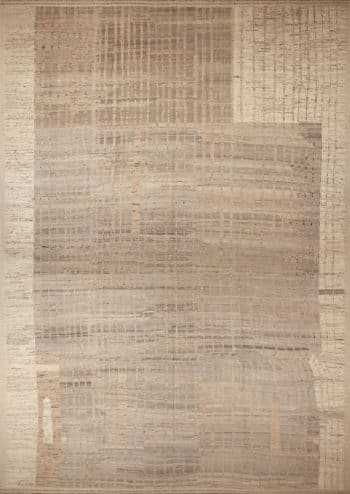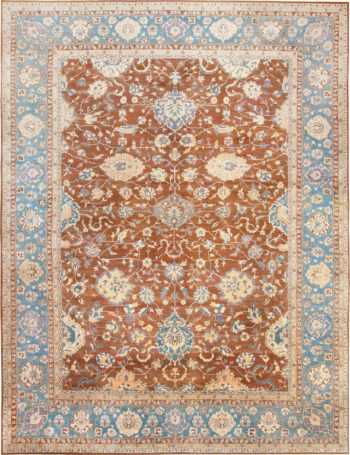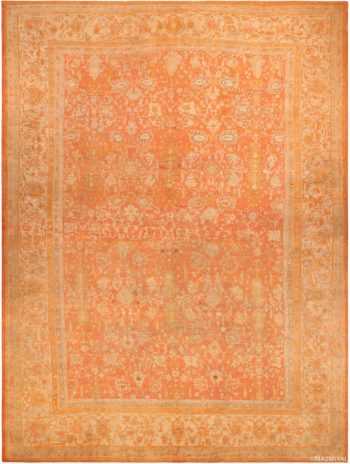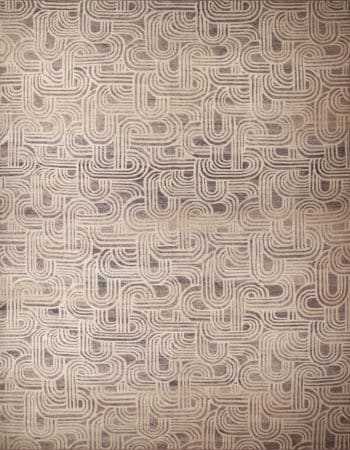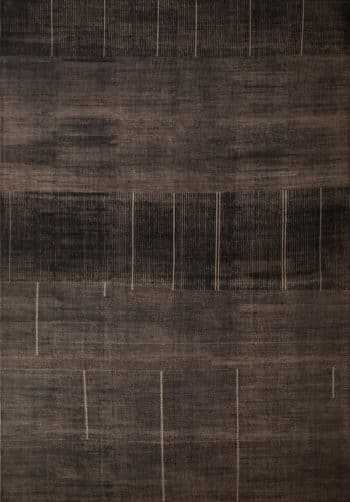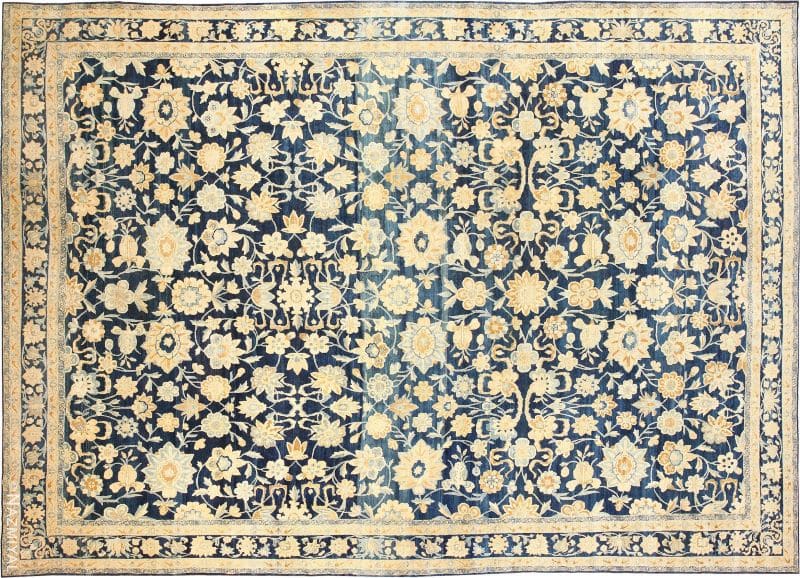Allover Rugs
View our Current Selection Of Antique Allover Rugs
Fine Ivory Floral Palace Oversized Antique Allover Oriental Persian Kerman Rug 48370
$140,000.00Size: 19 ft 7 in x 41 ft (5.97 m x 12.5 m)Antique Oversize Floral Romanian Bessarabian Kilim Rug 70101
$145,000.00Size: 17 ft 5 in x 34 ft (5.31 m x 10.36 m)Impressive Oversized Antique Persian Ziegler Sultanabad Rug 72255
$185,000.00Size: 16 ft 3 in x 32 ft (4.95 m x 9.75 m)Oversized Light Ivory Cream Tribal Chevron Modern Rug 11862
$33,740.00Size: 17 ft x 31 ft 5 in (5.18 m x 9.58 m)Rich Red Jewel Tone Oversized Antique Allover Design Indian Agra Rug 72240
$165,000.00Size: 18 ft 2 in x 30 ft 10 in (5.54 m x 9.4 m)Tribal Antique Oversized Persian Bakhtiari Geometric Rug 48042
$96,000.00Size: 15 ft x 30 ft (4.57 m x 9.14 m)Oversized Antique 17th Century Persian Esfahan Oriental Rug 44143
$285,000.00Size: 11 ft 4 in x 30 ft (3.45 m x 9.14 m)Fine Palace Oversized Decorative Allover Floral Vase Deign Antique Indian Rug 70305
$110,000.00Size: 16 ft x 29 ft 8 in (4.88 m x 9.04 m)Extra Large and Decorative Neutral Antique Indian Agra Carpet 50110
$96,000.00Size: 16 ft x 29 ft 6 in (4.88 m x 8.99 m)Beautiful Oversized Fine Decorative Antique Casual Elegant Persian Khorassan Rug 71956
$148,000.00Size: 18 ft 1 in x 29 ft 1 in (5.51 m x 8.86 m)Oversized Antique French Art Deco Carpet 70262
$95,000.00Size: 19 ft 4 in x 29 ft (5.89 m x 8.84 m)Oversized Neutral Cream Minimalist Geometric Stripe Modern Rug 11864
$35,595.00Size: 19 ft 7 in x 28 ft 10 in (5.97 m x 8.79 m)Ivory Background Allover Design Oversized Antique Persian Farahan Rug 72238
$45,000.00Size: 18 ft x 28 ft 10 in (5.49 m x 8.79 m)Vintage Oversize Scandinavian Brita Grahn Kilim Rug 49804
$66,000.00Size: 11 ft 8 in x 28 ft 10 in (3.56 m x 8.79 m)Decorative Antique Oversized Persian Khorassan Rug 48825
$89,000.00Size: 14 ft 4 in x 28 ft (4.37 m x 8.53 m)Large Oversize Antique Persian Khorassan Carpet 47032
$96,000.00Size: 12 ft x 28 ft (3.66 m x 8.53 m)Large Oversized Antique Decorative Brown Earth Tone Fine Floral Persian Khorassan Rug 48922
$88,000.00Size: 13 ft 4 in x 27 ft 4 in (4.06 m x 8.33 m)Oversized Light Neutral Earthy Tribal Geometric Nomadic Modern Rug 11856
$30,240.00Size: 17 ft 7 in x 27 ft 3 in (5.36 m x 8.31 m)Breathtaking Oversized Large Scale Antique Agra Rug 48660
$145,000.00Size: 20 ft 8 in x 26 ft 8 in (6.3 m x 8.13 m)Oversized Decorative Antique Turkish Oushak Carpet 71632
$165,000.00Size: 20 ft x 26 ft 6 in (6.1 m x 8.08 m)Long and Narrow Ivory Antique Indian Agra Runner Rug 49752
$12,500.00Size: 4 ft 6 in x 26 ft 6 in (1.37 m x 8.08 m)Oversized Neutral Purple Grey Art Deco Hollywood Regency Style Modern Rug 11863
$33,768.00Size: 20 ft 4 in x 26 ft 4 in (6.2 m x 8.03 m)Rich Earthy Charcoal Brown Color Tribal Geometric Modern Rug 11857
$30,310.00Size: 18 ft 3 in x 26 ft 4 in (5.56 m x 8.03 m)Oversized Light Ivory Cream and Soft Neutral Grey Tribal Geometric Modern Rug 11859
$31,500.00Size: 19 ft x 26 ft (5.79 m x 7.92 m)
Learn More About Allover Rugs
As you are browsing through our collection of exquisite carpets, you may encounter terms in the descriptions that describe the pattern of the rug. You may hear the terms such as medallion, tree of life, garden, vase or allover rugs. Let’s explore the allover carpet design.
What Does Allover Design Mean?
An allover design describes the pattern and design layout of the rug. To understand this better, let us contrast it with a medallion. A medallion rug has a central design, and the other elements of the rug radiate from the center and serve as supporting elements of the central motif.
A medallion carpet typically consists of a series of borders and a field. The field is divided into several components that might include the central medallion, formal corners and pendants located on either side of the medallion vertically. It might also contain a set of concentric designs with radiating borders that surround the central medallion. In a medallion rug, all of the elements support the focal point in the center of the carpet.
Allover rugs is a simpler design and only consists of a set of complex borders and a field. The design of the field covers the entirety of the space within the borders with some type of design. These can consist of a single repeating geometric motif, and in others, they can appear as a wild entanglement of flowers and vines. Some carpets of this type seem to be a little of both.
An allover carpet can be viewed as being similar to wallpaper or a piece of fabric. However, it is as if someone snipped a portion of the repeating pattern and placed it within the borders to form a frame. An allover design can have several different characteristics that give it a unique personality and style. Let’s explore some of the more popular design elements and layouts that you might find in this group of carpets.
Resolved or Unresolved Allover Design
One of the defining elements that lend to the suitability in a formal setting or an informal setting is whether the design is resolved or not. For the most part, the border in allover rugs stands on its own as a design element, and it is not that different from medallion or other carpet design. For this discussion, the border will serve only as a frame to the repeating motif in the field. It is the design in the field of the rug that will be the center of attention.
Some carpets appear as if they were carefully laid out, and the elements may appear in perfectly spaced rows and columns. Sometimes it seems as if the designer carefully planned out how the carpet would end, and it contains a completed row of design at the top. This carefully planned out end to the repeating pattern is sometimes referred to as a resolved border. This type of ending often gives the piece a more formal feel. It looks as if someone did considerable planning before executing the design.
Other times, it looks as if the design has been snipped off with a piece of scissors and continues beyond the borders. An unresolved edge can give the carpet an informal look, and it is almost as if the weaver decided they were finished halfway through a design row and put the top of the border in place. A design that has half of the element cut off on any side of the rug is an unresolved design.
When this occurs, it has two effects on the overall appearance of the carpet. When the elements in the field are large, it can make the room look more expansive. This technique was often used in the palace-sized rugs that were found in public buildings during this Safavid Empire. In this type of design, the artist gives your brain enough clues that it can fill in the rest of the design as if the rest of the carpet would look like if it were present. This technique uses the power of imagination to create the illusion of space. The other effect of an unresolved allover design is that it can have an informal feel.
It is still possible for an unresolved carpet design to retain a formal feel. For instance, if the design itself is elaborate and formally executed, it can retain a schooled, formal quality. This is often seen in the rugs designed for palaces and mosques. However, when used in a tribal rug, this can make the carpet have a more earthy, folk-art feel. It is if the weaver abruptly decided they were finished. It does not look as if the weaver planned the end at all. Sometimes, only a very small portion of what would be the next design row is included. This can give a tribal rug a rustic character.
Types of All Over Designs
Historically, allover designs appear before the development of the medallion rugs. Allover designs can be found dating back to the earliest carpets. Many of the earliest rugs fall into the category of pictorials or all-over repeated motifs. However, medallions do not begin to appear until around the 16th century.
Simple Repeated Symbol in All Over Designs
The most straightforward allover designs are those that have a repeating geometric motif. Some of them fill the entire field of the carpet with a single symbol or design. They are often evenly spaced, and the symbol represents a particular concept or idea. One example of this is the Gul motif. This is an octagonal design that is often seen in Ottoman rugs.
Repeated motif rugs can consist of a single symbol or two or more symbols that are repeated in alternating rows. Sometimes, the repeated patterns are surrounded by diamonds or circles. This technique is sometimes used with floral designs and vine-work diamond. This creates the appearance of a latticework fence, similar to those that appear on the walls of the formal gardens of palaces.
Some of the more common motifs that appear in this type of allover rugs are the herati, rosette, boteh, and Shah Abbasi palmette. They can also include one or more plants such as the cypress tree, hyacinth, lotus flowers or other florals. Carpets that have an all-over design with only one or two repeated symbols enhance this message through the repetition of it. Carpets with simple single repeating motifs can be found in both the formal carpets made in cities and those created by remote, pastoral tribes.
Complex Repeated Motifs in All Over Designs
Some carpets have an elaborate design that is repeated along the length of the carpet. For instance, they may have a vase with flowers spewing from it where each of the design forms a complete picture in itself. This can have a similar effect as a quilt block or tile design. These rugs have a formal feel and show a significant degree of planning in their design. Sprays of flowers are a common theme found in many of these types of rugs.
Meandering AllOver Designs
Some allover rugs appear to meander with no obvious evidence of planning. It is as if the weaver repeated patterns from memory and placed them as they were moved to do so. These rugs have a particular charm because they show the artistic expression of the person who wove it. Motifs are passed on from generation to generation using songs or other memory devices. Even though remote tribes produce many carpets of this type, you can still find some elaborate florals in carpets produced in the weaving centers that appear to be a garden of rambling flowers and vines.
Changing Repeats in All Over Designs
When you talk about the repetition of the design in allover rugs, it seems to be a matter of degree. Some of them have a carefully executed design all along the field. The rug appears as if it was produced with measured precision. Other times, it is difficult to distinguish a repeating pattern at all. Some rugs fall between these two extremes.
Some rugs have the appearance of a repeat, but when you look closer, the artist changed the colors slightly or modified the design each time the pattern repeated over the length of the rug. In tribal rugs, this can mean that one weaver took over the work from another. This was common practice, and because the rug is rolled onto the bottom bar of the loom, you cannot see what was done by those who came previously.
Symmetrical or Asymmetrical Allover Rugs?
Another design quality to pay attention to when examining an allover rug is whether it has symmetry or not. Even though in allover rug does not have a formal medallion, sometimes a single motif is placed in the center. Other times, the center of the carpet is marked with a blank space between the motifs. All-over patterns may have horizontal or vertical symmetry. However, sometimes and all-over carpet seems to have no center at all and is asymmetrical.
Symmetry is an effective way to control the focal point of the design. When a central design or space is placed in the center, even if it is only a part of a repeating pattern, it draws the eye to the center of the rug and creates a focal point. However, allover rugs that lack a central point draw the attention away from the center to the borders of the rug. Many times, lines will be strategically placed using flowers, vines, animals or geometric motifs. Some carpet artists create line and direct the eye in a way similar to the way painters do using similar layout techniques.
Allover rugs can appear to be formal and sophisticated, carefully executed in fine detail with precision. They can also appear to be a chaotic, yet beautiful, splash of flowers within the frames of the border. They can have a formal or informal design quality, and you can find one to suit any decorating style.
Allover designs are one of the most common rug designs and are found in almost all cultures around the world. Now that you understand a bit more about allover designs look for some of the characteristics that are described in this article. We have a large selection of allover design rugs to choose from, and you will be sure to find one that suits your tastes.

